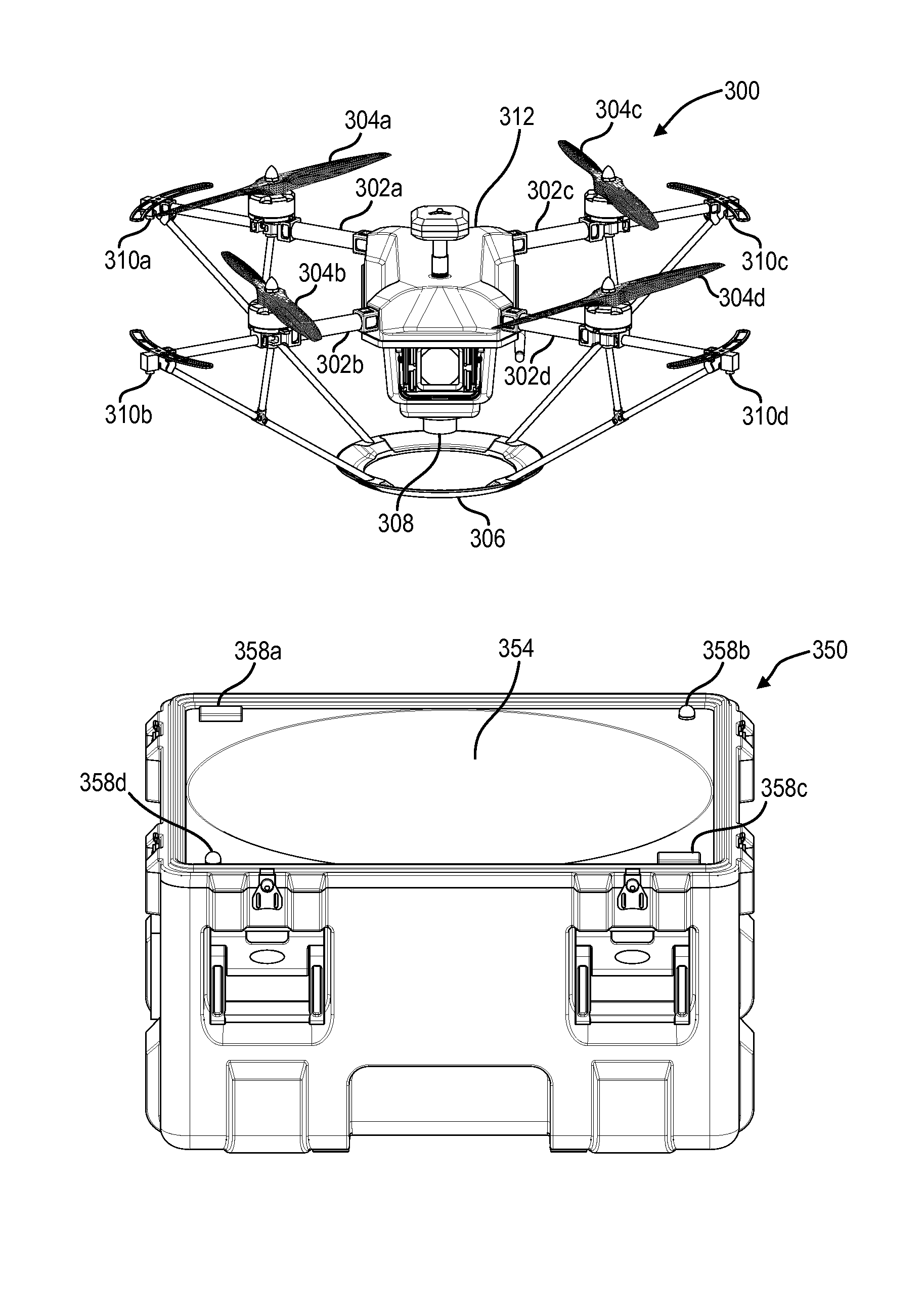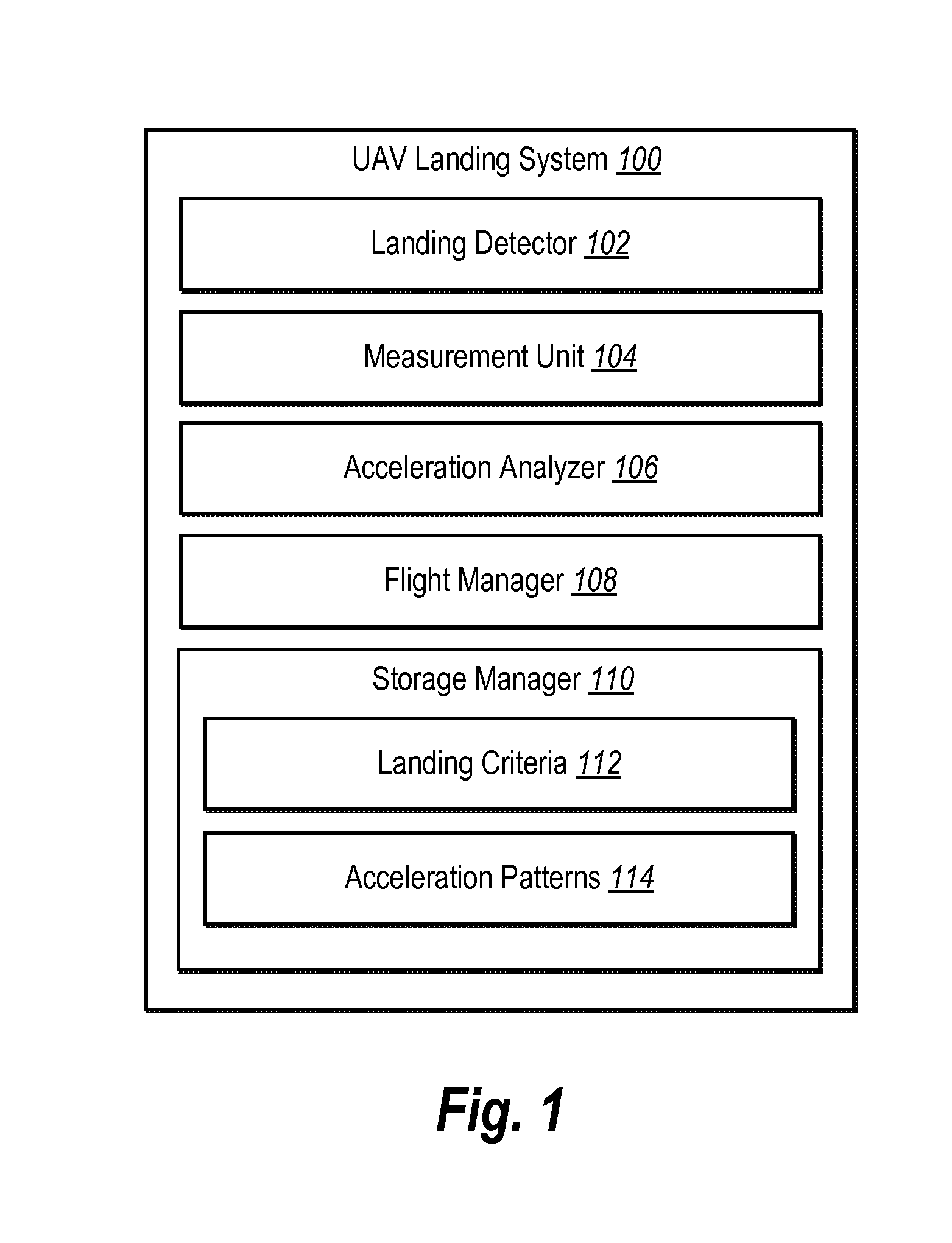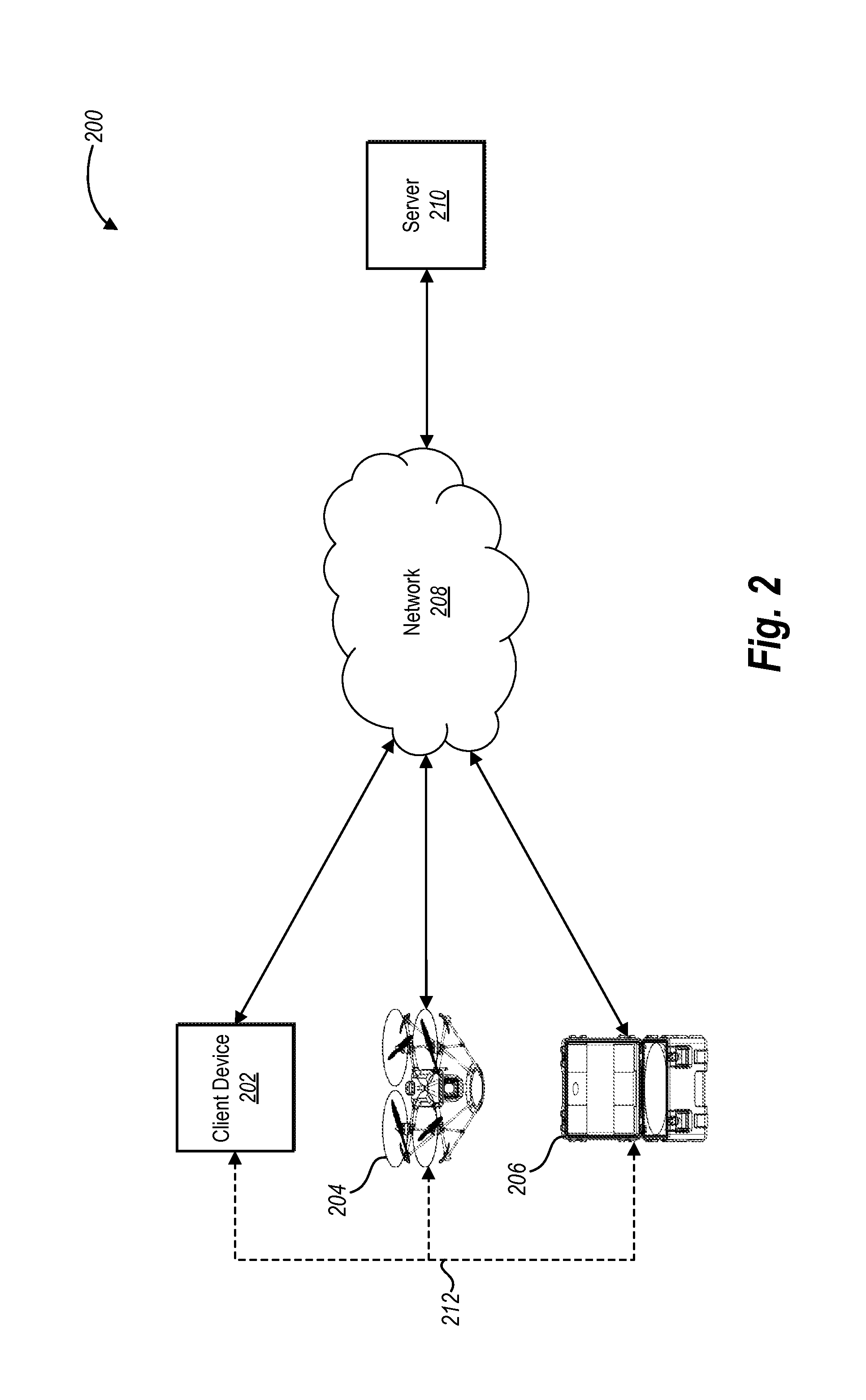Utilizing acceleration information for precision landing of unmanned aerial vehicles
a technology of acceleration information and precision landing, which is applied in the direction of vehicle position/course/altitude control, process and machine control, instruments, etc., can solve the problems of bouncing often disappoints users, the majority of uav operators, and the reliability of uav operators
- Summary
- Abstract
- Description
- Claims
- Application Information
AI Technical Summary
Benefits of technology
Problems solved by technology
Method used
Image
Examples
Embodiment Construction
[0026]One or more embodiments of the present disclosure include a UAV landing system. In particular, in one or more embodiments the UAV landing system utilizes acceleration information to assist in landing a UAV. For instance, the UAV landing system can detect a sudden change in acceleration and adjust operation of the UAV based on the sudden change in acceleration to more efficiently and safely land the UAV.
[0027]For example, in one or more embodiments, the UAV landing system determines that a UAV is landing and detects an acceleration spike with regard to the UAV. In one or more embodiments, the UAV landing system compares the acceleration spike to a pre-defined threshold and, based on the comparison modifies operation of the UAV while landing.
[0028]To reduce unnecessary bouncing or gyration of the UAV during landing, in one or more embodiments the UAV landing system can detect an acceleration spike indicative of contact with another object. For instance, the UAV landing system ca...
PUM
 Login to View More
Login to View More Abstract
Description
Claims
Application Information
 Login to View More
Login to View More - R&D
- Intellectual Property
- Life Sciences
- Materials
- Tech Scout
- Unparalleled Data Quality
- Higher Quality Content
- 60% Fewer Hallucinations
Browse by: Latest US Patents, China's latest patents, Technical Efficacy Thesaurus, Application Domain, Technology Topic, Popular Technical Reports.
© 2025 PatSnap. All rights reserved.Legal|Privacy policy|Modern Slavery Act Transparency Statement|Sitemap|About US| Contact US: help@patsnap.com



